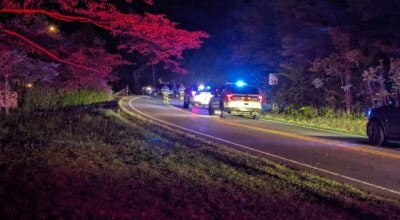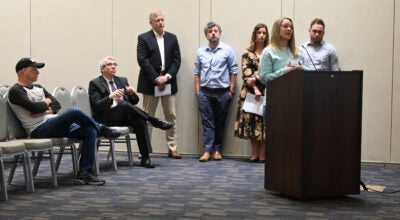Health study boundaries don’t include Salisbury
Published 12:00 am Wednesday, December 2, 2009
By Emily Ford
eford@salisburypost.com
KANNAPOLIS ó The “C” and “K” in “MURDOCK Study” stand for Cabarrus County and Kannapolis.
And that’s exactly where you must live to participate in the landmark medical project that kicks off this fall at the N.C. Research Campus.
At least for now.
From the beginning, study organizers with Duke University have said they will enroll people living in Cabarrus and Kannapolis. But the residency requirement has taken some Salisbury folks by surprise as they learn more about the project.
“We were disappointed,” said Eleanor Qadirah, who had hoped to enroll with three friends.
Qadirah and her friends, Mary Anne Laningham, Carolyn Biddix and Robbie Ladd, learned last week that they don’t qualify because they live in Salisbury.
The women were attending a seminar at the Research Campus about the MURDOCK Study, which stands for Measurement to Understand Reclassification of Disease Of Cabarrus/Kannapolis and is named for benefactor David Murdock.
“We’ve been keeping up with the program,” Biddix said. “It’s too bad that they’ve cut it off in Cabarrus County when we are really close.”
The women, who have been friends for 10 years and met at Rufty-Holmes Senior Center, said many Salisbury seniors are interested in the four diseases Duke will tackle: Hepatitis C, diabetes, heart disease and osteoarthritis.
Study limits
Study leaders did not intentionally exclude Salisbury, they say. In fact, they hope one day to include the city’s residents.
“It’s highly likely that we will find ways to expand recruitment into other parts of Rowan County,” said Victoria Christian, chief operating officer for the MURDOCK Study.
The Rowan County portion of Kannapolis is already included.
As they planned the groundbreaking study, which could last for decades and cost hundreds of millions of dollars, leaders had to limit the initial area for practical reasons, Christian said.
“No one has attempted to do what we are doing,” she said. “It is really complex and ambitious to get something like this up and running.”
The study aims to enroll 50,000 participants over the next five years, starting in Cabarrus and Kannapolis.
When and if Salisbury joins the catchment area depends on two things: participants and money.
If the study can’t meet its enrollment goals in Cabarrus and Kannapolis, leaders would consider expanding into Salisbury.
They will know within a year, Christian said.
“We need to figure out what momentum we can create here and what the associated costs of operation are,” she said.
The study has earmarked $16 million, or almost half of Murdock’s gift, for enrolling participants. This includes drawing blood, storing it for years and hiring study coordinators, as well as other expenses.
Even if the study is meeting regular enrollment benchmarks, leaders might consider expanding into Salisbury.
“When the engine is humming in Cabarrus County, there will be a lot of pressure to expand,” Christian said.
That might require more money, which could mean writing grants, soliciting foundations or finding another benefactor.
Free enrollment
Although Carolinas HealthCare System was tapped as the exclusive health-care provider for the N.C. Research Campus, the MURDOCK Study is free to enroll anyone and recruit any physician’s practice, regardless of affiliation, Christian said.
The study has a good working relationship with Carolinas HealthCare System, which owns CMC-Northeast Medical Center in Concord, Christian said.
But study leaders are already working with at least one medical practice owned by rival Novant Health, which runs Rowan Regional Medical Center in Salisbury.
“We have no philosophical opposition to expanding to Novant,” Christian said.
Starting soon
Enrollment in the study’s massive registry will start this fall.
Patients who have doctors affiliated with the study can enroll in their offices.
Those with unaffiliated doctors, and even those with no doctors at all, can enroll at a number of sites on the Research Campus. If they choose, participants will be able to start the enrollment process online.
But all 50,000 participants must meet face-to-face with a MURDOCK Study employee to complete enrollment and the informed consent process, which takes about 30 minutes.
“We are really trying to break down all barriers to recruitment,” Christian said.
That mindset could mean good things for the four women who met at Rufty-Holmes Senior Center and other Salisbury folks who want to participate.
“In keeping with that spirit, I hope we will find a way to include these people in this study,” Christian said.
She pointed out that Dr. Ashley Dunham, the community health project leader who is in charge of the registry, lives in Salisbury.
“Salisbury is a close community with a great deal of interest in the N.C. Research Campus,” Christian said. “I hope they will be patient.”





